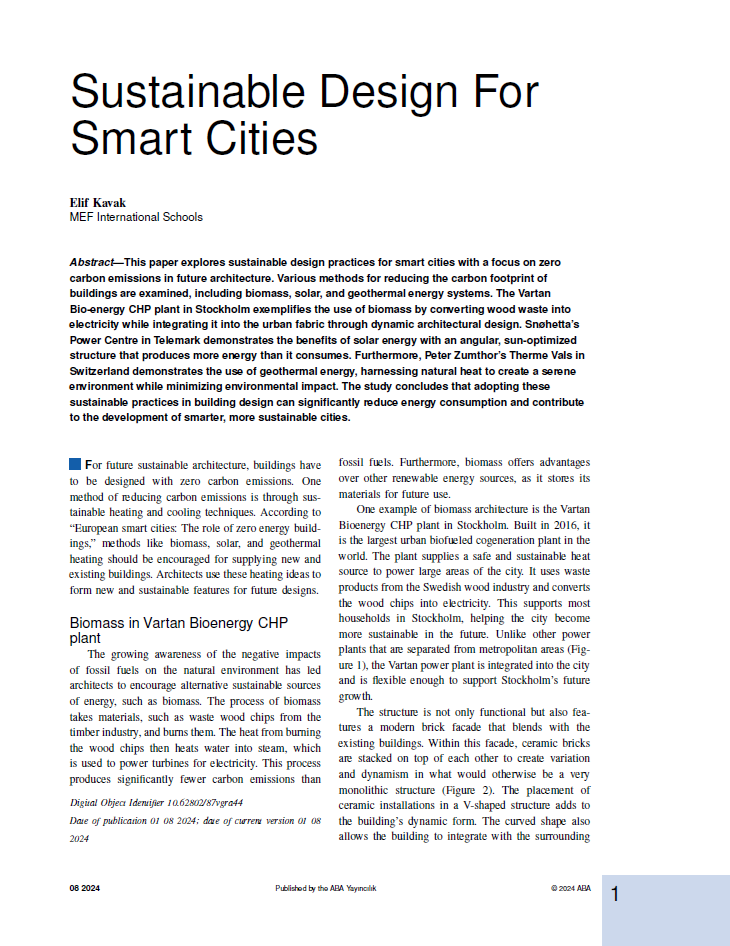Sustainable Design For Smart Cities
DOI:
https://doi.org/10.62802/tvhave21Keywords:
Sustainable Architecture , Smart Cities , Zero Carbon Emissions , Biomass Energy , Solar Heating , Geothermal EnergyAbstract
This paper explores sustainable design practices for smart cities, focusing on zero carbon emissions in future architecture. Various methods for reducing the carbon footprint of buildings are examined, including biomass, solar, and geothermal energy systems. The Vartan Bio-energy CHP plant in Stockholm exemplifies the use of biomass by converting wood waste into electricity while integrating it into the urban fabric through dynamic architectural design. Snøhetta's Power Centre in Telemark demonstrates the benefits of solar energy with an angular, sun-optimized structure that produces more energy than it consumes. Furthermore, Peter Zumthor's Therme Vals in Switzerland reflects the use of geothermal energy, harnessing natural heat to create a serene environment while minimizing environmental impact. The study concludes that adopting these sustainable practices in building design can significantly reduce energy consumption and contribute to the development of smarter, more sustainable cities.









